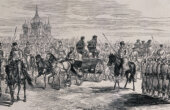The Hyperloop: A 200-Year History of Hype and Failure
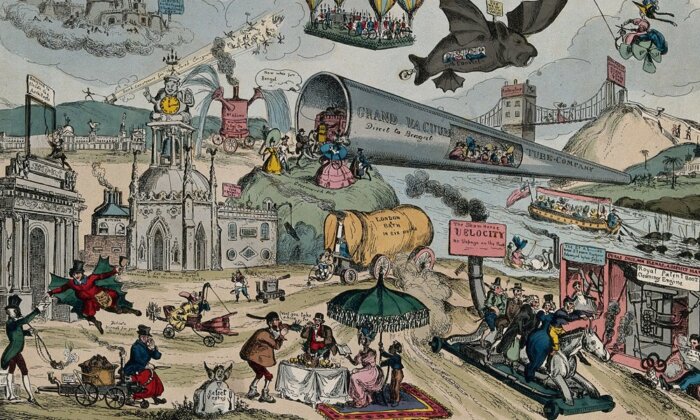
On August 12, 2013, Elon Musk, at that time the chairman of Tesla, released his Hyperloop Alpha paper. At its very beginning, when outlining the background of the idea, he asked whether there was “a truly new mode of transport — a fifth mode after planes, trains, cars and boats” that would be safer, faster, cost less, and be more convenient while being immune to weather, sustainably self-powering, resistant to earthquakes, and not disruptive to people living along its route. He noted that “many ideas for a system with most of those properties have been proposed and should be acknowledged, reaching as far back as Robert Goddard’s to proposals in recent decades by the Rand Corporation and ET3. Unfortunately, none of these have panned out.”
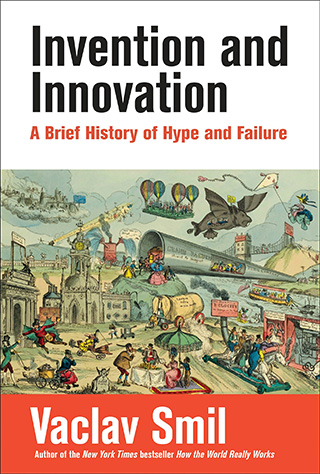
While the second sentence of this quotation was quite correct, the first one greatly understated the origins of the idea and the time that has elapsed since its first coherent formulation, a reality that should lead to exceedingly cautious and highly skeptical appraisals concerning its near-term commercial realization.
But first I must note Musk’s wrong label: A loop is a shape that is produced by a curve that bends around and crosses itself, and I leave it to your imagination what shape it would take to make it a hyper loop. Hyperloop is thus an incorrect — indeed, a highly misleading — term for the means for rapidly transporting people enclosed in pods inside a very low-pressure and overwhelmingly straight metallic tube. The misleading classifier aside, this fifth mode of transportation consists of several distinct components whose specific attributes can vary.
The visible infrastructure is a tube with a diameter only large enough to accommodate the pods capable of carrying a small number of passengers. This tube can be built on pylons aboveground or it can be placed in an underground tunnel. The pod size depends on the number of people (Hyperloop Alpha specified 28; other designs range between four and 100) and on their accommodation: comfortably seated in reclined chairs or supine. High speeds — ranging from subsonic to near sonic (the speed of sound is 1,235 km/h) — are achievable only in a complete vacuum or in very low-pressure atmospheres. Hyperloop Alpha specified an internal pressure of 100 Pa, that is, less than 1/1,000th of the pressure at sea level. Pods can ride on air cushions or be magnetically levitated. Modern systems would be energized by advanced linear motors.
England’s unfolding steam-based industrialization offered many new opportunities for outrageous claims, financial scams, and false prophecies of technical miracles.
The historical record shows that there is nothing new about any of these ideas, that the basic concept for the fifth mode of transportation has been around for more than 200 years, and that during the intervening time various patents were filed, several detailed proposals were made, and some models and mock-ups of specific components were built. And yet not a single (near) vacuum- or low-pressure-tube, super-fast transportation project (be it for people or goods, or both) has been completed and put into operation, not even a trial short-distance link encompassing all of the design’s basic components.
A tube is the component with the longest history, but the idea of using very low pressure is also more than two centuries old. Remarkably, the proposals for both these key features of the supposedly revolutionary fifth mode of transportation are older than the Liverpool and Manchester Railway, the first steam-powered intercity transportation conveyance, which began to carry passengers and freight in 1830.
George Medhurst, an English clockmaker and inventor, was the pioneer and determined proponent of rapid travel in tubes. In 1810 he published a brief pamphlet titled “A New Method of Conveying Letters and Goods with Great Certainty and Rapidity by Air,” proposing to send letters in small hollow vessels propelled by air pressure in tubes (generated by steam engines), and concluded that the same principle (with commensurately raised pressure) could be used to move goods at speeds at least 10 times those achievable with canal or wagon travel.
In 1812 he presented the more detailed “Calculations and Remarks, Tending to Prove the Practicality, Effects and Advantages of a Plan for the Rapid Conveyance of Goods and Passengers Upon an Iron Road Through a Tube of 30 Feet in Area, by the Power and Velocity of Air.” He revisited the proposal once more, in 1827 (the year of his death), in a publication with an even longer title: “A New System of Inland Conveyance, for Goods and Passengers, Capable of Being Applied and Extended Throughout the Country; and of Conveying All Kinds of Goods, Cattle, and Passengers, with the Velocity of Sixty Miles in an Hour, at an Expense That Will Not Exceed the One-Fourth Part of the Present Mode of Travelling, Without the Aid of Horses or Any Animal Power.”
These short pamphlets were not widely known, but in 1825 the British public could read about a much bolder proposal for using tubes, vacuum, and high speeds to cover the distance of just over 600 kilometers between London and Edinburgh in five minutes (yes, minutes, not hours). The proprietors of the newly formed London and Edinburgh Vacuum Tunnel Company, after “having carefully matured their plans,” published (in the Edinburgh Star) their prospectus for a joint stock project “with a capital of Twenty Millions Sterling, divided into 200,000 shares, of £100 each, for the purpose of forming a Tunnel or Tube of metal between Edinburgh and London, to convey Goods and Passengers between these cities and the other towns through which it passes.”
Boilers would be placed every two miles along the two side-by-side tunnels (tubes), and the steam they generated would be used to create a vacuum. When the vacuum seal was broken right behind the train at the departure end, the inrushing air would instantly propel the train into the tube by pushing on “a very strong air-tight sliding door, running on several small cylindrical rollers, to lessen the friction.” The train would carry only goods because the tube would be just four feet (1.2 meters) in diameter, and passengers would be seated in railway carriages running on rails fastened to the tube’s top and coupled by strong magnets to the freight train inside the tube whose rapid progress would drag on the passenger train, covering nearly 800 kilometers in five minutes.
The London Mechanics’ Register, a new periodical established to diffuse scientific knowledge “among the operative classes of society,” reprinted the notice in order “to throw ridicule upon some of the preposterous plans now before the public for the investment of money.” Precisely!
The country’s unfolding steam-based industrialization offered many new opportunities for outrageous claims, financial scams, and false prophecies of technical miracles, and the decade’s leading satirical illustrator did not miss his opportunity to lampoon the early promise of travel in a vacuum. William Heath (1794–1840) initially called himself a “portrait & military painter,” but during the 1820s he published many satirical colored etchings, often alluding to political affairs of the day or lampooning generic human follies.
In 1829 Thomas McLean in London published Heath’s colored etching “March of Intellect. Lord how this world improves as we grow older.” The busy image is crowded with such would-be futuristic contraptions as a suspension bridge from Cape Town to Bengal, a four-wheeled steam-powered horse called VELOCITY, a gun-carrying platform that was lifted by four balloons, and a large winged flying fish crammed with convicts being transported from England to Australia. But the etching’s center of interest is a large seamless metallic tube that is conveying passengers from Greenwich Hill (in East London) directly to Bengal, thanks to the innovative acumen of the Grand Vacuum Tube Company.
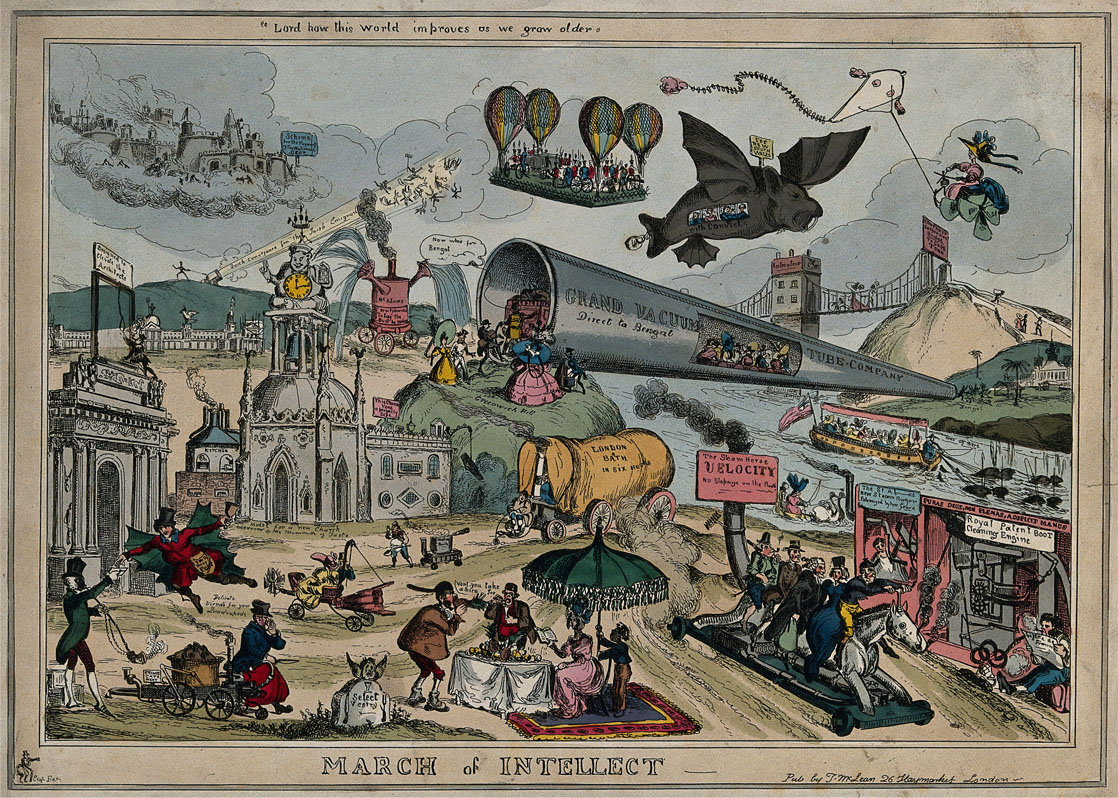
By the time Heath pictured in color the intercontinental Britain-India conveyor, enough was known about vacuum to realize that it would be the best option for attaining unprecedented speeds inside a tube, but the material requirements made any realization highly premature. In the 1820s there was plenty of cast iron but no mass production of affordable high-tensile steel (material available in bulk only after the invention of Bessemer’s converter, patented in 1856) to build such a tube, no reliable means to create and sustain very low pressures inside tubes extending for hundreds of kilometers, and no ready means to enclose people safely in vacuum-enveloped containers.
The decades following the rapid demise of the notion of a five-minute trip from London to Scotland saw assorted proposals, exploratory rail schemes, and even some actual projects involving unusual modes of propulsion, above all attempts to commercialize “atmospheric” railways. These railways did not need any locomotives and relied on air pressure to push freight cars along the rails. An airtight pipe with a piston was laid between the rails; steam engines situated along the track pumped the air out of the pipe in front of the piston, creating a partial vacuum; and the higher air pressure behind the piston propelled railway cars (connected to the piston by a metal plate protruding through a slot at the top of the pipe). Obvious advantages were the absence of noise, smoke, and sparks from locomotives, as well as the ability to climb steeper grades than locomotive-driven trains.
These efforts began with a proposal for the National Pneumatic Railway Association in 1835. In 1839 Jacob and Joseph Samuda conducted trial runs on a short track, reaching maximum speeds of 48 km/h and a 50 percent vacuum, and in the early 1840s the first commercial line, the Kingstown and Dalkey Railway, operated briefly in Ireland. These trials impressed Isambard K. Brunel, perhaps the country’s most famous engineer, so much that he pushed (against the warnings of his engineering peers: Robert Stephenson, the country’s leading locomotive designer, called it a “great humbug”) its installation on a 52-mile section of the South Devon Railway between Exeter and Plymouth. Work began in 1844, and even before it was completed Brunel had installed an atmospheric railway on a shorter part of the Croydon Railway.
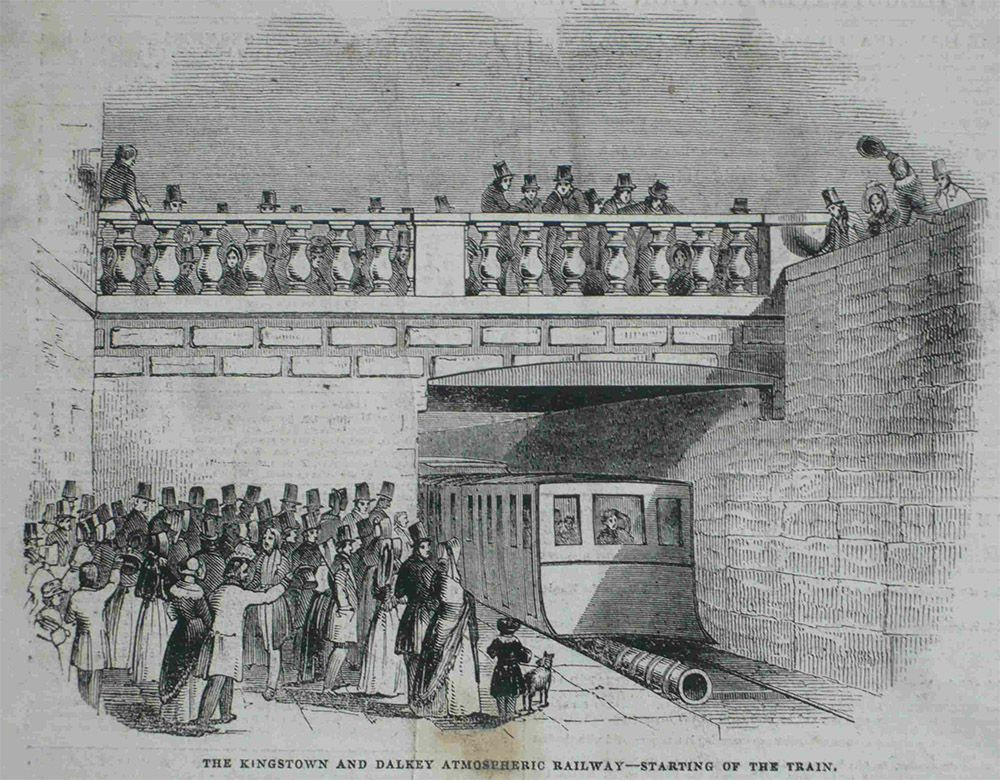
But by September 1848, after less than a year of “atmospheric” operation (steam locomotives were used until 1847 as the system kept malfunctioning) and after a substantial monetary loss, it was all over. For months, Brunel kept promising success, but the lines were plagued by too many insurmountable problems. Perhaps the trickiest part was the moving slot in the pipe: It required an airtight seal to maintain a partial vacuum in front of the piston, but the tallow-treated leather flap, even when not chewed on by rats, provided a poor seal and kept drying out and turning brittle.
Additional short-lived (and short-distance) atmospheric railways ran between 1847 and 1860 near Paris, at London’s Crystal Palace in 1864 (just 550 meters), and under New York’s Broadway between 1870 and 1873 (a pneumatic subway track of a mere 95 meters). More powerful and more efficient) steam locomotives, and before the century’s end also new electric traction, made all unwieldy “atmospheric” projects clearly uncompetitive.
The next important development in the long-running saga of tube-enclosed rapid transport came with the proposal for magnetic levitation. The first patents for specific components of this new technique were awarded in 1902 to Albert C. Albertson and to Alfred Zehden in 1905, and at least three inventors contributed to advancing the concept of maglev transportation.
Chronologically, the first description came from Robert Goddard, the physicist who became later well known as the founder of American rocket propulsion. During his freshman year at the Worcester Polytechnic Institute, his class was given an assignment on the topic of traveling in 1950, and Goddard outlined his idea of a levitated train inside a tube with propulsion provided by direct current magnets traveling from New York to Boston in 10 minutes. He read the project’s description to his fellow students on December 20, 1904, and in January 1906 he rewrote it in the form of a short story titled “The High-Speed Bet” and submitted it for publication in Scientific American.
The story was eventually condensed, to concentrate on the basic technical facts, and got a mere third of a page in the periodical’s November 20, 1909, issue. But even with this delay, Goddard, as he stressed later, had his idea published before Émile Bachelet, a French electrician who emigrated to the U.S. in the early 1880s and filed for a patent on levitated high-speed trains on April 2, 1910.
But it was Bachelet’s work, not Goddard’s proposal, that received unusually extensive public attention. Bachelet was granted the U.S. patent for a “Levitation transmitting apparatus” on March 19, 1912, and his subsequent presentations of a working small-scale model of magnetically levitated train with a tubular prow, powerful “repelling magnets” at the track’s bottom, and tubular steel cars on an aluminum base were well received both by invited experts and by print media.
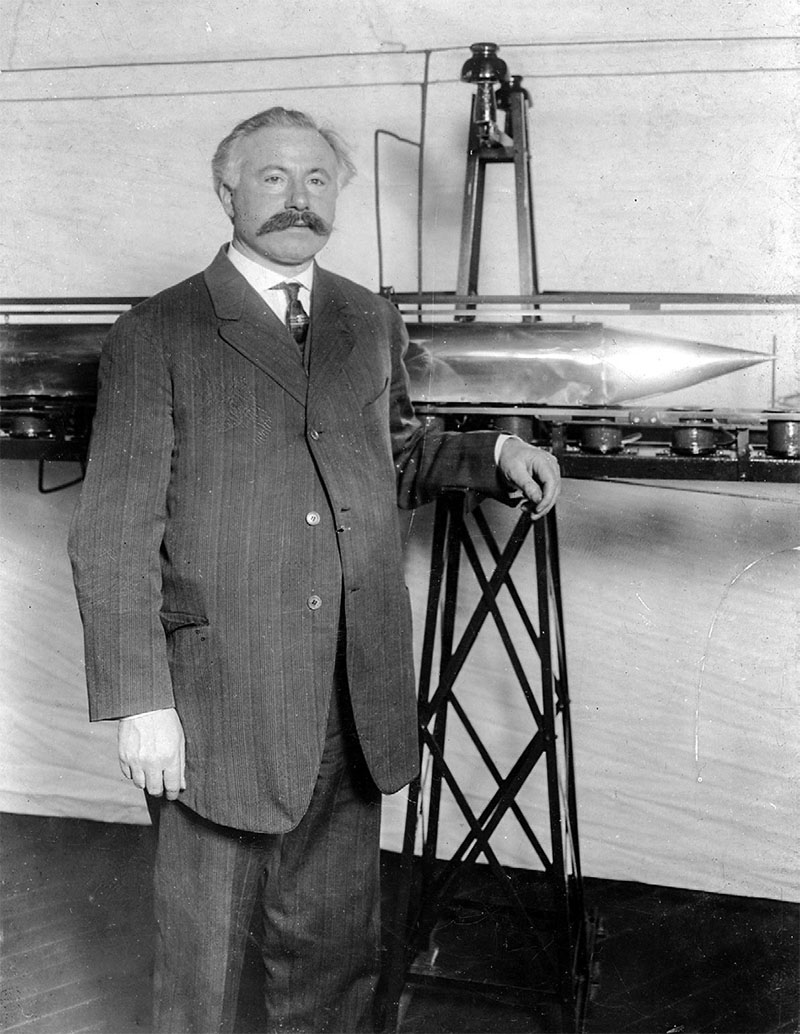
The third inventor with pre–World War I magnetic levitation designs was Boris Petrovich Weinberg, head of the Physics Department at the Tomsk Institute of Technology in Siberia. Between 1911 and 1913 he built a model consisting of a 10-kilogram iron carriage, a 20-meter-long (32-centimeter-diameter) evacuated ring tunnel of copper and a series of sequentially activated solenoids on top of the pipe suspending the carriage that eventually circulated at 6 km/h. This proof of concept was followed by proposals for a full-scale project operating at speeds of 800–1,000 km/h with passengers lying in cigar-shaped (0.9 meters in diameter, 2.5 meters long) steel cylinders supplied with oxygen.
His book, “Motion without Friction,” was published in Russia in 1914, and after he was sent to the U.S. by the Russian military to secure deliveries of artillery shells, brief illustrated descriptions of his proposal also appeared in two American journals, in 1917 in the Electrical Experimenter (“Traveling at 500 Miles Per Hour in the Future Electric Railway”) and in 1919 in Popular Science Monthly (subtitled “An Electromagnetic Method of Transporting You through a Vacuum from New York to San Francisco in Half a Day”).
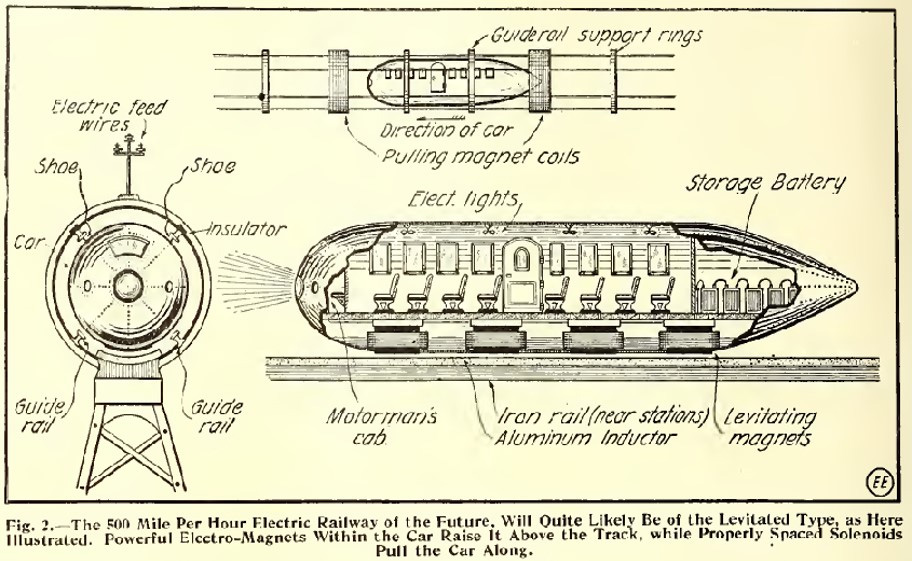
In 1920 Robert Ballard Davy was granted the U.S. patent for a vacuum railway “comprising generally, a tube with stations at intervals, the tube between the stations having a partial vacuum produced therein so that suitably propelled cars moving therein may travel with greater speed by reason of the lessening of the air resistance.” Nothing new here, so he also claimed “a novel arrangement in the stations, whereby the car has egress and ingress to the adjacent vacuum tube portions, without admitting enough air to said tube portions to destroy the vacuum,” as well as “a novel locking arrangement for the sliding and hinged doors which form important parts of the aforesaid stations.”
None of these endeavors resulted in any practical results, but Goddard’s proposal received much delayed attention after World War II. Less than three months before his death on August 19, 1945, Goddard applied for the U.S. patent for a vacuum tube transportation system, and on June 20, 1950, the patent, accompanied by three pages of detailed technical illustrations, was granted to his wife, Esther, jointly with the Guggenheim Foundation.
But the 1950s were the era of oversized cars, expanding flying, and declining train ridership (in the U.S. it had already peaked in 1920), and though there were additional levitation-related patents issued during the 1950s and 1960s, another notable American proposal came only in 1972 when Robert Salter, at the Rand Corporation in Santa Monica, came up with a very high-speed transit system concept whose “tubecraft” would ride on, and be driven by, electromagnetic waves generated by pulsed or oscillating currents in electrical conductors forming the “roadbed” structure of an evacuated “tubeway.”
None of the system’s often repeated advantages in comparison with high-speed rail has been tested on even a single commercial project.
Incredibly, Salter maintained that the speeds required for his proposed continent-spanning link (New York to Los Angeles) would “certainly be on the order of thousands of miles per hour,” and such supersonic speeds — far surpassing the speed of the Concorde, the British-French jetliner that flew for the first time in 1969 — could be accommodated only in super-straight underground tunnels whose construction would claim all but a small share of the system’s overall cost. By 1978 Salter was suggesting that the “Planetran” could be “extended to a worldwide network using under-ocean tunnels to connect continents” and that it would be “safe, convenient, low-cost, efficient and non-polluting.” What a perfect example of that common phenomenon of an inventor attached to his cherished project far beyond the boundaries of any critical appraisal!
In reality, during the 1970s and 1980s the U.S. saw only a further deterioration of its by then badly outdated railroad network even as Japan and Europe were expanding their high-speed links, starting with the Tokyo-Kyoto shinkansen in 1964 and the Paris-Lyon Train à Grand Vitesse in 1981. Concurrently, several countries, most notably Japan and Germany, constructed short tracks to begin experiments with magnetic levitation trains. Germany’s Emsland track (1984–2012) was closed after a fatal accident, while Japanese researchers eventually (in 2015) achieved a new record speed of 603 km/h.
The first short commercial maglev projects were the Pudong-Shanghai line in 2004, which used a German design, and Japan’s Linimo line in 2005, with three more short and relatively low-speed connections coming online in South Korea and China in 2016 and 2017. Construction continues on the first long-distance maglev link, Japan’s Chuo shinkansen between Tokyo and Osaka, but completion has been repeatedly postponed, now into the late 2020s.
There have been numerous bold intra- and international plans for maglevs outside East Asia, both in North America and in Europe, but no actual commitments. Publication of Hyperloop Alpha — greeted by the media and by new-tech enthusiasts unaware of the long history of kindred designs as amazingly original and stunningly transformative — brought a multitude of new plans for high-speed transportation links and led not only to a large number of naïve endorsements, numerous technical assessments, and exploratory designs but also to the setting up of new companies dedicated to turning the idea into commercial reality.
Virgin Hyperloop One, one of Richard Branson’s companies, has by far the most ambitious plans: It operates a small 500-meter test track in Nevada, and in 2020 its experimental pod with two passengers reached 175 km/h, hardly a remarkable achievement (higher speeds have been routine for high-speed trains since the 1960s). The Virgin Hyperloop has identified 11 possible routes in the U.S., including a megaproject linking Cheyenne in Wyoming (about 60,000 people) with Houston (more than 1,800 kilometers away), nine routes in Europe, including undersea links between Corsica and Sardinia and between Spain and Morocco, and it has plans for lines in India (Pune to Mumbai), Saudi Arabia (Riyadh to Jedda), and the United Arab Emirates.
Hyperloop TT, a company with a 320-meter test track in France, has plans to connect such unlikely pairs of smaller (and relatively close) cities as Brno in Moravia (Czech Republic) with Bratislava in Slovakia and Vijaywada with Amaravati in India’s Andhra Pradesh state. The earliest reports claimed completion of the first commercial hyperloop lines as soon as 2017, then 2019 and 2020.
These years have come and gone, and we are no closer to even a convincing full-scale prototype demonstration, to say nothing about a single completed and truly reliable, safe, and profitable commercial link between two cities. No hyperloop line, on pylons or in tunnels, was in operation by early 2022, and the forecasts of earliest completion dates have shifted to the late 2020s. None of the system’s often repeated advantages in comparison with high-speed rail — the absence of wheels (moving on air cushion or magnetically levitated), much faster operating speeds, significantly reduced energy use, lower construction costs — has been tested on even a single commercial project, and all such claims, until proven otherwise, remain in the category of wishful thinking.
Past proposals of rapid enclosed conveyances could not be realized because 19th- and 20th-century engineers lacked suitable materials and techniques to build the requisite tubes and pods, to lower their inside pressure to levels approaching vacuum, and to propel the capsules safely and reliably across great distances. None of those challenges has gone away. Those who are best placed to appreciate the enormous difficulties facing such projects — vacuum physicists and railway engineers — have pointed out many fundamental barriers that would have to be overcome before vacuum tubes conveying people at near-sonic speeds could become even 1/10th as common as high-speed trains with steel wheels on steel rails.
Musk has trivialized many aspects of high-speed in-tube transportation, starting with route selection and ending with the actual cost of the entire system. To say that hundreds of kilometers of elevated tubes on pylons would “cause minimal disruption to farmland roughly comparable to a tree or telephone pole, which farmers deal with all the time” is a blatant misrepresentation of the need for actual pad sizes and access required for construction and maintenance. More important, as judged by numerous precedents in designing projects ranging from freeways to high-voltage transmission lines, route selection and approval would be a very complicated process marked by detours and delays.
Yet in July 2017 Musk, out of the blue, famously tweeted that he had “just received verbal government approval for The Boring Company to build an underground NY-Phil-Balt-DC Hyperloop. NY-DC in 20 mins.” Anybody aware of the complex preparations, assessments, and negotiations leading to the approval of any multibillion-dollar project cutting across numerous jurisdictions and requiring the consent and cooperation of federal, state, and local governments, as well as compliance with a long array of applicable restrictions and requirements, must view Musk’s 2017 tweet with utter disbelief. The tweet clearly implies that somebody in D.C. just picked up the phone and gave “verbal government approval” to a company that had no experience and no record of completed projects to build a 600-kilometer-long tunnel for a 1,000 km/h train.
Anyone familiar with the complexities of multibillion-dollar project approvals must view Musk’s 2017 tweet about “verbal government approval” for his Hyperloop with outright disbelief.
Moreover, in a country that has not been able to upgrade the old rail line between New York and Washington, D.C., to anything better than Acela, a “rapid” train that does not have a dedicated track and whose average speed is just 125 km/h, even as more densely populated Europe has been building thousands of kilometers of special tracks for true rapid trains traveling 200–300 km/h and even more densely populated China has completed tens of thousands of kilometers of high-speed tracks. Similarly, anybody even fleetingly familiar with the initial cost estimates and eventual cost overruns that have accompanied most large-scale construction projects of the last generation must view the totals for capital costs of assorted proposed lines as nothing but uncertain guesses.
Although we have the advantages of having both advanced materials and propulsion and control systems of unprecedented power and complexity, affordable construction and routine and competitive operation of these new transportation schemes are not imminent.
Challenges range from the acceptability of traveling in a claustrophobic pod hurtling through a metal pipe at the speed of sound (overcoming that is not as easy as projecting images of beautiful landscapes on the pod’s walls!) to mastering and ensuring a large number of engineering firsts, with the pressure differential being the most obvious fundamental concern. Although the Hyperloop would not maintain a perfect vacuum, the pressure of 100 Pa comes close enough: Jetliners flying in the upper atmosphere move through air whose pressure is more than 200 times higher, while the Hyperloop would operate under an equivalent of upper stratospheric (50 kilometers above sea level) pressure.
Catastrophic decompression is one of the worst possible scenarios in flight, and in the context of an extreme pressure difference it would be far more deadly in a long near-vacuum tube containing people-carrying pods. A steel tube on pylons would have to be engineered to maintain the thousandfold pressure difference between its inside and outside walls that threatens to crush it, and it would have to do so reliably along hundreds of kilometers of the track while also supporting the pressure generated by the rapidly moving pods and coping not just with overall thermal expansion along its course but with the differential thermal expansion between the tube’s top and bottom, an occurrence particularly significant in hot climates. With a common temperature variance of 50 degrees Celsius (−10 to +40 degrees Celsius), the system would require numerous expansion joints, each required also to maintain a near vacuum.
Undergrounding the tube would eliminate most of these concerns, but to do that would require achieving an additional engineering first: constructing tunnels spanning hundreds, if not thousands, of kilometers, many of them in earthquake-prone regions. Although modern tunneling has become remarkably mechanized, costs remain high. The Gotthard Base Tunnel in Switzerland, at 57 kilometers the world’s longest, cost about $10.5 billion (nearly $200 million per kilometer) and took nearly 17 years to finish. And, all too obviously, an extensive network of near-vacuum tubes would pose an easy terrorist target, with relatively minor explosions causing catastrophic decompressions.
And in 2022 we got a comprehensive indication of what transportation experts think about the idea. A worldwide survey by the International Maglev Board indicated that transportation experts have rejected the Hyperloop plan, mainly because they believe that it underestimates operational and safety complexity, along with costs (for both infrastructure and operations). All in all, not even a half-baked idea, and given these critical sentiments and the actual post-2013 accomplishments, it would seem prudent to advise the cognoscenti of rapid travel who are waiting for the fifth mode of transportation coming to their cities to watch their diet and exercise in order to remain in good health and achieve a long lifetime.
If the lessons of promises and claims raised since 1810 by Medhurst, Goddard, Bachelet, and Salter are even remotely applicable to this latest round of infatuation with in-tube travel, then longevity is imperative. Even if everything goes better than we can imagine, it will take a long time indeed before the first fare-paying travelers enter the pods in Cheyenne, Brno, or Vijaywada, are accelerated to near-sonic speed, and arrive at the next station, hundreds of kilometers away, in just minutes. After more than 200 years of such dreams, we are still waiting.
Vaclav Smil is Distinguished Professor Emeritus at the University of Manitoba. He is the author of over 40 books, including “Growth,” “Energy and Civilization,” and “Invention and Innovation,” from which this article is excerpted. In 2010 he was named by Foreign Policy as one of the Top 100 Global Thinkers. In 2013 Bill Gates wrote on his website that “there is no author whose books I look forward to more than Vaclav Smil.”


